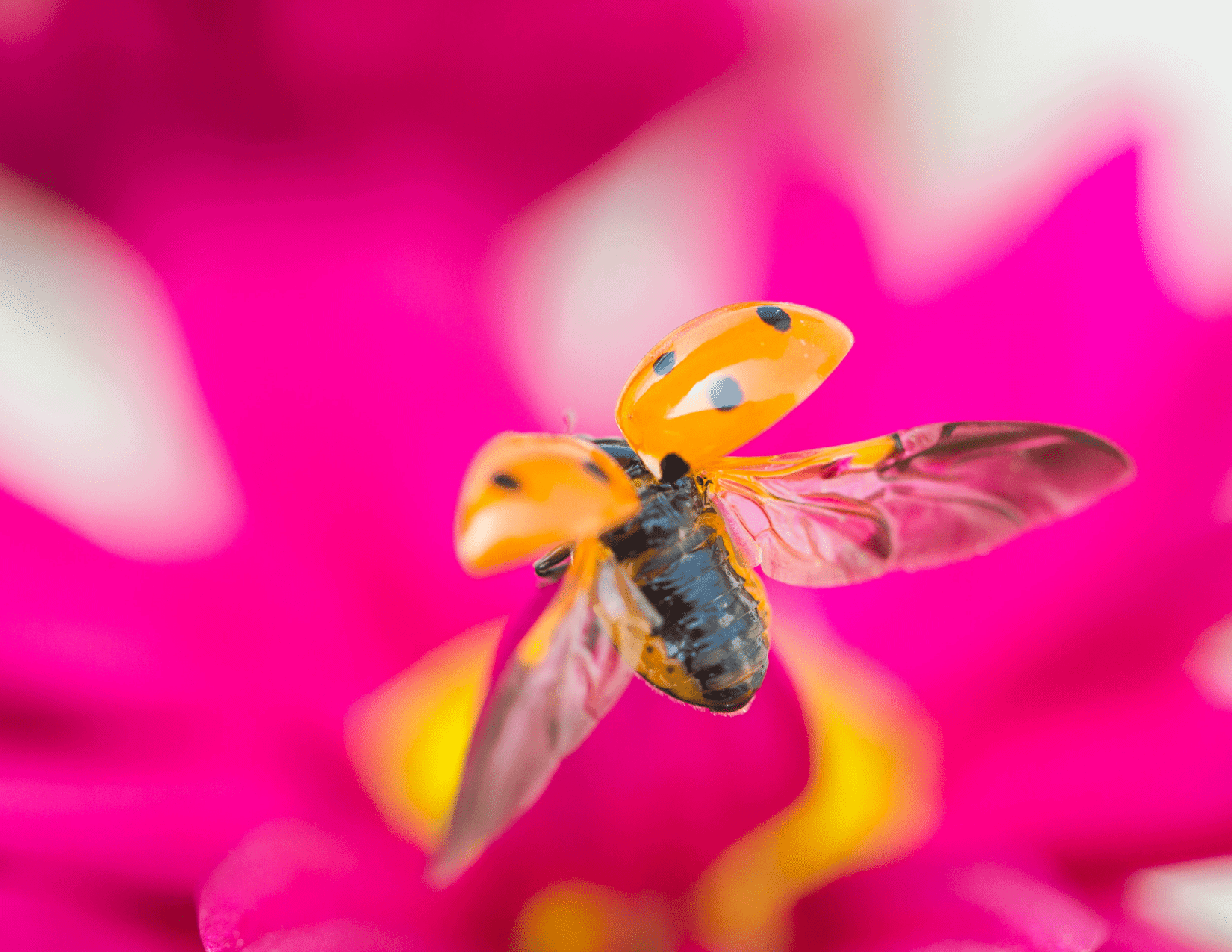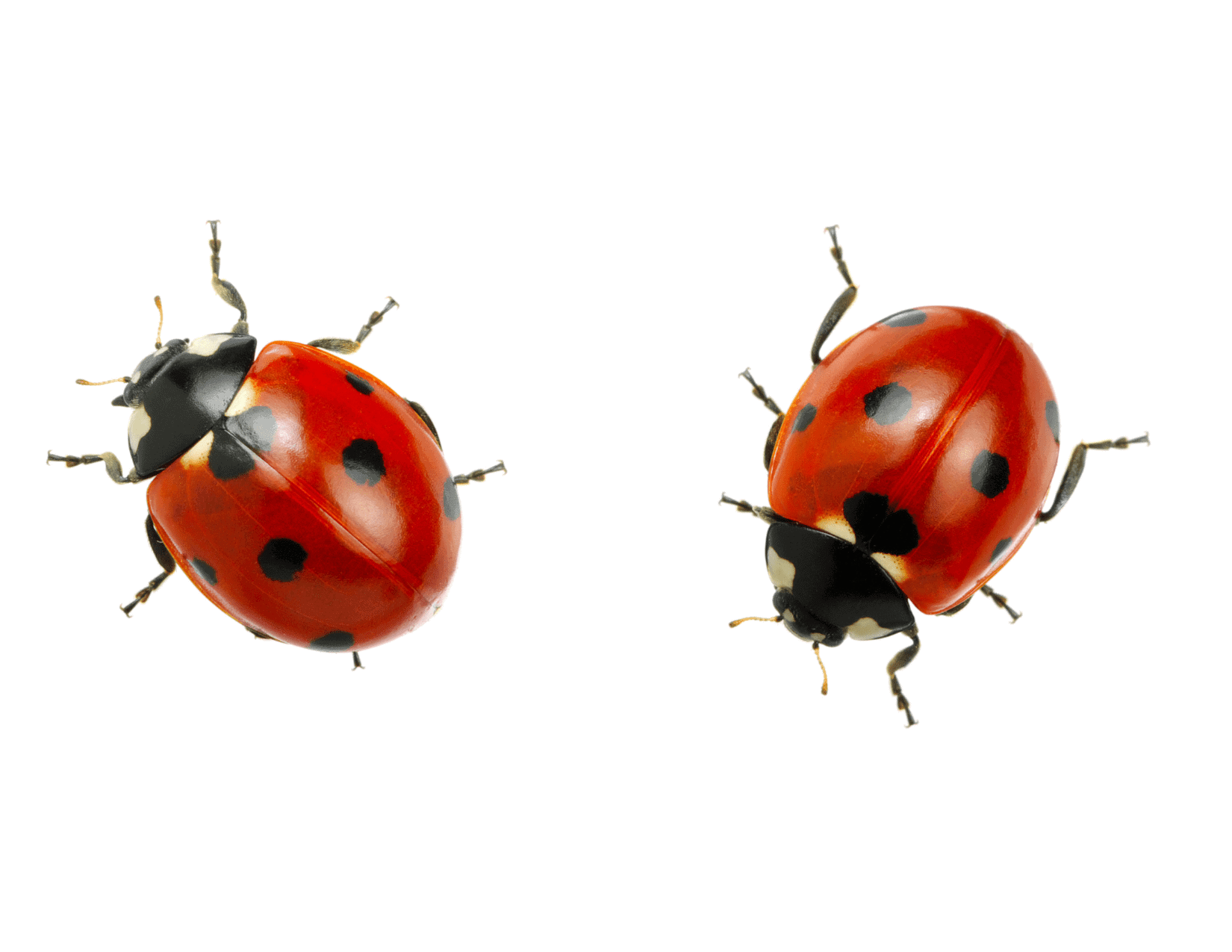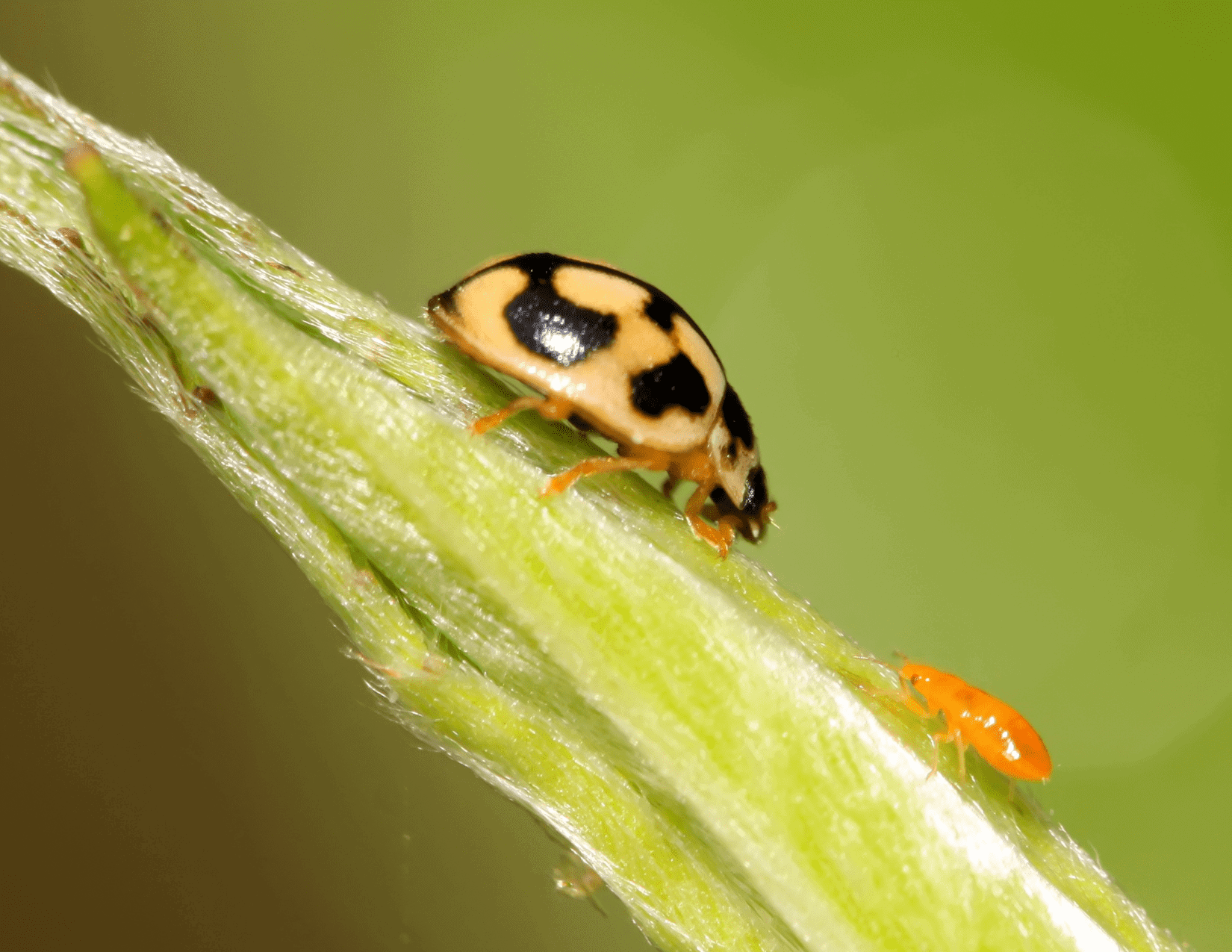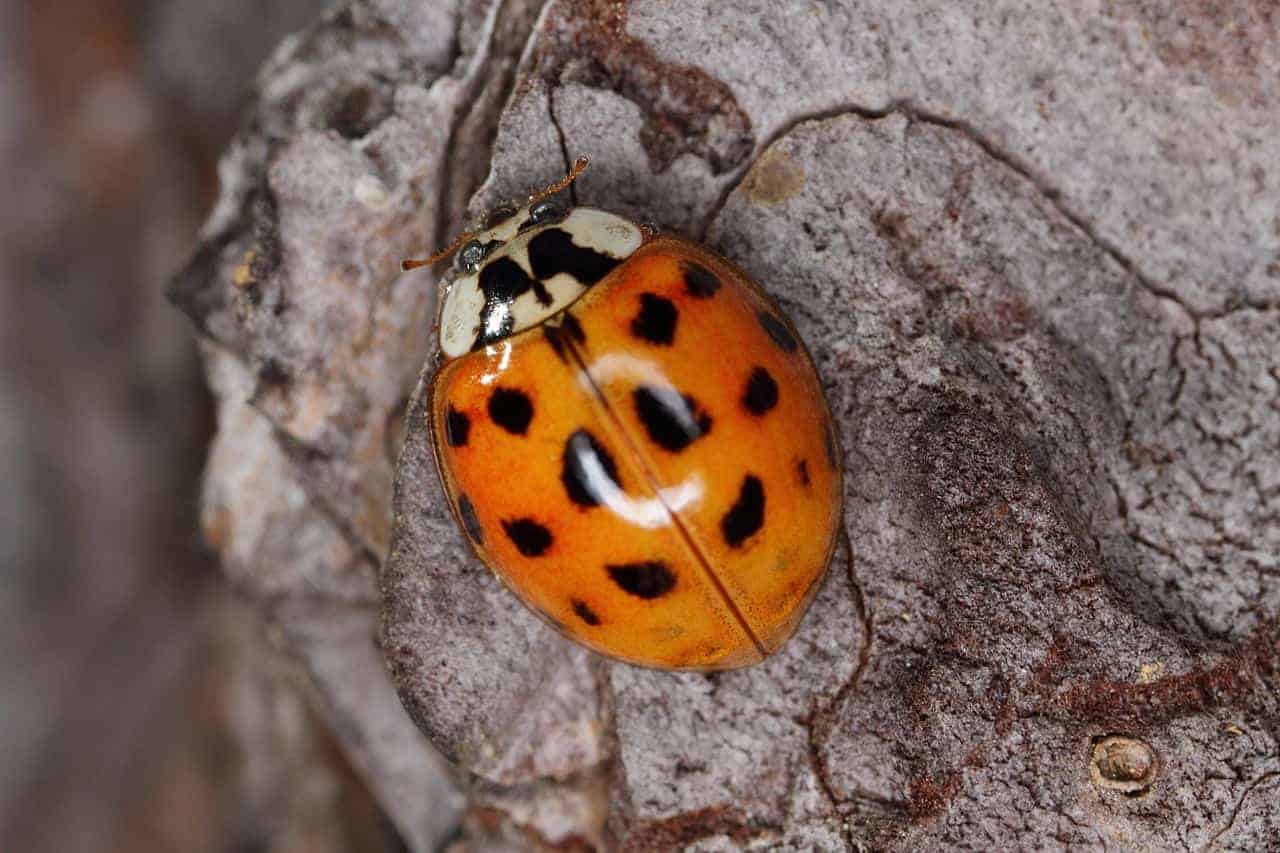How Many Spots Does A Ladybug Have?
How many spots does a ladybug have? Well, let us count the ways! This cute little iconic beetle is probably one of the first bug creatures that has enamored your kids. I think every parent gets super excited to be able to introduce one to your child, am I right?? There it is, on a branch or a leaf. You immediately try to get it to crawl on your hand. And then your child’s hand. And then you recite the poem when it flies away. True story.

Chances are it is the common red 7 spotted ladybug you found, or possibly a multi spotted yellow or orange one. But did you know there are more than 4,500 species of ladybugs around the world? Isn’t that incredible? Even more unbelievable is the fact that there are over 450 species of ladybugs right here in North America alone. Hard to imagine that diversity right in our own backyards and neighbourhoods. Yet, when you think of a ladybug, I’ll bet what comes to mind is the common 7 spot red ladybug, right?

Learn fascinating facts about this colourful little beetle and get a free downloadable matching activity to get your little ones engaged. When you’re finished with indoor play make sure you download the guide for ladybug hunting and go out in the backyard to see what you can find! Take pictures of your ladybugs and submit them to the ongoing Cornell University Lost Ladybug Project and help them find the nearly extinct 9 spot ladybug!
Ladybugs are insects
Ladybugs are part of a group of insects called beetles. Entomologists prefer the names ladybird beetles or lady beetles as these insects are not classified as true bugs. Their scientific name is Coccinellidae.
Ladybugs play a very important role in the food web, even though they are small. These colourful beetles are predators that feed on aphids and scale insects like mealybugs. Therefore, they are very beneficial to agricultural plants and orchards. Removing this function from the ecosystem tips the balance and would allow aphids to multiply. This tiny little beetle can eat up to 50 aphids a day! Check out the blog post Ladybugs are Predators of the Garden. We had an aphid infestation on our cherry tree and decided to get a bag of ladybugs from the local garden centre to release on the tree!
Reading About Ladybugs
If you need a great fact-based ladybug book, we love “Ladybugs” by Gail Gibbons or a fun read-aloud book is “The Grouchy Ladybug” by Eric Carle. One of our staples is ”The Ladybug and Other Insects” by Gallimard Jeunesse and Pascale de Bourgoing. We love this book because it has a very clear Montessori type of approach to presenting the material. There are large uncluttered images per page featuring one point of interest. The book is interspersed with clear acetate pages that are overlays for additional information. It’s an older book you can maybe find in your local library or through a used book seller. It’s worth searching out.
One of our favourite books about bugs is Nature All Around – Bugs by Pamela Hickman and Carolyn Gavin. And a super fun matching game with sliding panels contained in a book format is Matching Game Book: Bugs and Other Little Critters by Stephanie Babin.
Inspecting Ladybugs
Ladybugs are fun to catch and observe. You can go out to the yard and find a few, put them in a clear container with holes and watch some of the things they do. If you’re looking for a more robust and versatile kit that contains everything you need to set up a nature exploration table, we stock the Junior Bugwatch for just this purpose!
Always remember to keep your bug collection out of direct sunlight and make sure you release your catch by the end of the day.
While observing ladybugs, you could offer them a snack many people have on hand – raisins! Soak 2-3 raisins in water for a couple of minutes to soften them up before dropping them into your habitat. In fact, ladybugs will enjoy small amounts of raisins, lettuce, or honey. Soak 2-3 raisins in water for a couple of minutes to soften them up before dropping them into your habitat.
What do Ladybugs eat?
The common ladybugs you see in your neighbourhood and garden, like the red 7 spotted or Asian multispotted, primarily eat aphids and soft bodied insects like whiteflies and mites. But some species are herbivores that eat leaves and even vegetables like potatoes, squash or beans.

And what about those spots?
There are some myths about ladybugs that should be cleared up right away
Myths:
- Ladybugs are not all females. There are male ladybugs too.
- The number of spots do not indicate how old a ladybug is (however the spots can fade a little in an older ladybug)
- If a ladybug does not have any spots, it doesn’t mean they just haven’t appeared yet (the spots may be very faint in some ladybugs after they emerge from the pupa, but they will become fully visible when the elytra or hard outer wing covers harden)
- Ladybugs are poisonous (it is true that bright colours and especially red usually indicates “danger, do not touch” in the animal or plant world, but ladybugs are not poisonous to humans)
- The spots are always round (The spots can be round, but also come in a variety of other shapes)
- The spots are always black (Most ladybugs have black spots but there are some differences. There is an orange ladybug that has creamy white coloured spots (Halyzia Sedecimguttata) commonly found in Europe. There are also black ladybugs with red spots (Harmonia Axyridis or Harlequin ladybugs)
So how many spots does a Ladybug have?
That depends! It depends on the species. Ladybugs may have no spots, two spots or lots and lots of spots. The spots may be round, oval, kidney shaped, misshapen looking, more like stripes or bands or even just more like a black pattern on a coloured background.
The elytra or hard shell wing covers are where the spots are found. The elytra can also vary greatly in colour. Aside from the red ladybug, there are many shades of yellow and orange ladybugs, plus blue ones, black ones and three species of white ones. Entomologists use the number of spots, the colour of the elytra and the size of the ladybug to help them identify the species.
Red, Yellow and Orange Ladybugs
Did you know? Out of all the hundreds of ladybugs found in North America, the red 7 spot and the orange and yellow multi spotted ones commonly found in your garden or neighbourhood are not even a native species. Both of these species (Coccinella septempunctata and Harmonia axyridis) were introduced to the United States from Asia in the early 20th century. These ladybugs were brought in to control aphids in greenhouses and on soybean and other agricultural crops. Both species began to really take hold in the 1960’s and 1970’s and slowly have outcompeted native species.
The easiest way to identify the Multispotted Asian ladybug is to look at the spot pattern on the pronotum (the protective “hood” behind the head and in front of the colourful elytra). If you see a black “W” or an “M” pattern (depending on which way the ladybug is facing you), then you can be sure it is the Multispotted Asian.
Source: wikipedia
Which Ladybugs are native to North America?
The 9 spot ladybug is one native species that is close to extinction. It is yellowish orange with 4 spots on each elytra and one in the middle. This ladybug was very common up until about 20 years ago. It was believed to be extinct until one was found in Virginia in 2006. This discovery by a 10 and 11 year old brother and sister sparked the Lost Ladybug Project at Cornell University that is open to the general public to participate in. Check it out!
Some other species that are native to North America include the transverse ladybug and the two spotted ladybug. The two spotted has red elytra and 2 black spots – not to be confused with the “twice stabbed” ladybug which has black elytra and 2 red spots.
Make sure you download the free ladybug matching cards which feature some of these species, including the “twice stabbed”, so that you can become an expert ladybug hunter too!
Learning the parts of the Ladybug
The Montessori philosophy features a strong emphasis on learning the “parts of” things as well as the proper word for describing each part. “Nomenclature” is a term used in the sciences in particular, which describes the system of naming things. Whether scientists are referring to chemical compounds or plants, a system of nomenclature is used to reduce confusion and increase accuracy.
Our wooden Ladybug nomenclature puzzle and matching nomenclature cards are designed with this philosophy in mind. So, for example, a ladybug does not just have “wings”. The red “wings” are actually called elytra and are not used for flying. The elytra are hard protective coverings for the delicate flying wings hidden underneath.
10 Circle Time Fun Facts about Ladybugs
1) Ladybugs are a type of beetle.
2) Some ladybugs have no spots and others have up to 20 spots.
3) To help defend themselves, ladybugs play dead. They also can release a yellow fluid that other bugs find stinky.
4) The color of the ladybug sends off the message to its predators that it may taste bad or be poisonous.
5) Ladybugs cluster together as a way to “deter predators by increasing the concentration of their smell and their warning coloration.”
6) When the temperature is near 60 degrees Fahrenheit or around 16 degrees Celsius, the ladybugs become active.
7) Ladybugs are very helpful to a garden as they eat aphids and mites, which are bugs that are harmful to plants.
8) An adult ladybug can eat up to 50 aphids in a day.
9) Ladybugs taste and smell with their antennae.
10) A ladybug lays its egg on a leaf. They are yellow eggs that turn white.
What Ladybugs have you seen around your home and garden? Did you download the free matching cards? Don’t forget to download the free Ladybug field guide poster full of information about how to carefully find and examine ladybugs. Take pictures of what you find and submit them to the Lost Ladybug Project. Let us know how you made out in the comments below!
Happy Hunting!





